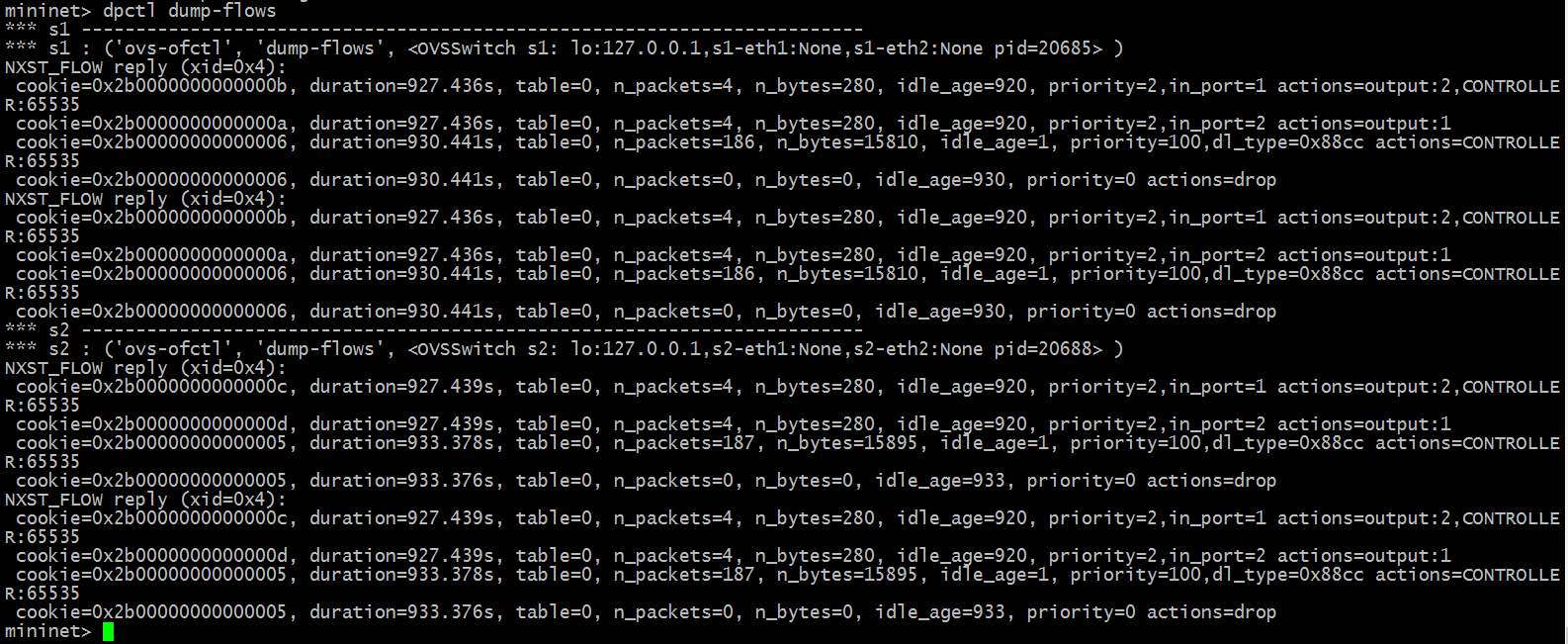Viewing the flow mappings
Mininet allows you to use the dpctl command to communicate with the virtual switch and get the status of the flows.
The basic command to check the flows is dpctl dump-flows:

The preceding output shows the current flow table in both s1 and s2 virtual switches.
Are you looking for the MAC addresses or IP addresses of the source and destination in the preceding screenshot? For sure, you are! But remember that this is the output you receive after running the pingall example. In the pingall example, OpenDaylight has created a flow entry in switches to simply send all packets from port 1 to port 2 on each switch and vice versa.
If OpenDaylight configures a specific flow with an IP address or MAC address, then you will be able to see more details in your flow table.
Try running Mininet with more hosts and different topologies for practice; capture the packets and check the flow table of the switches. This will help you get friendlier with OpenDaylight and OpenFlow.




































































